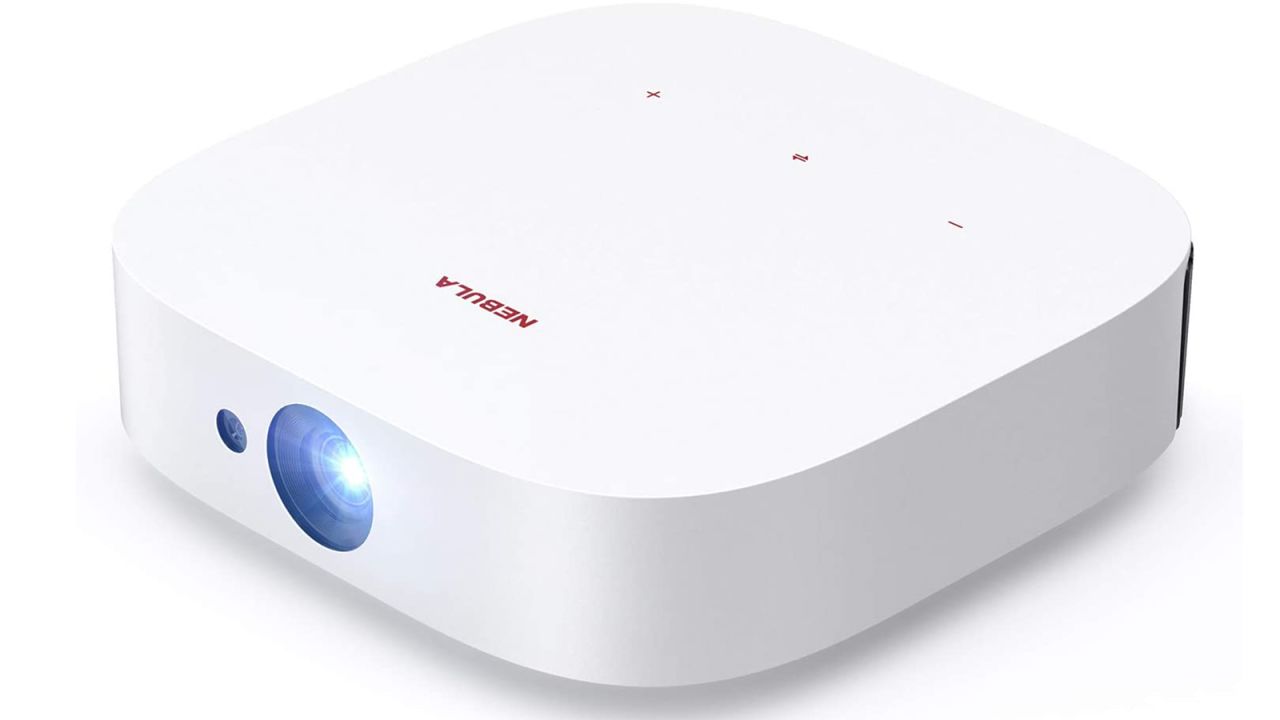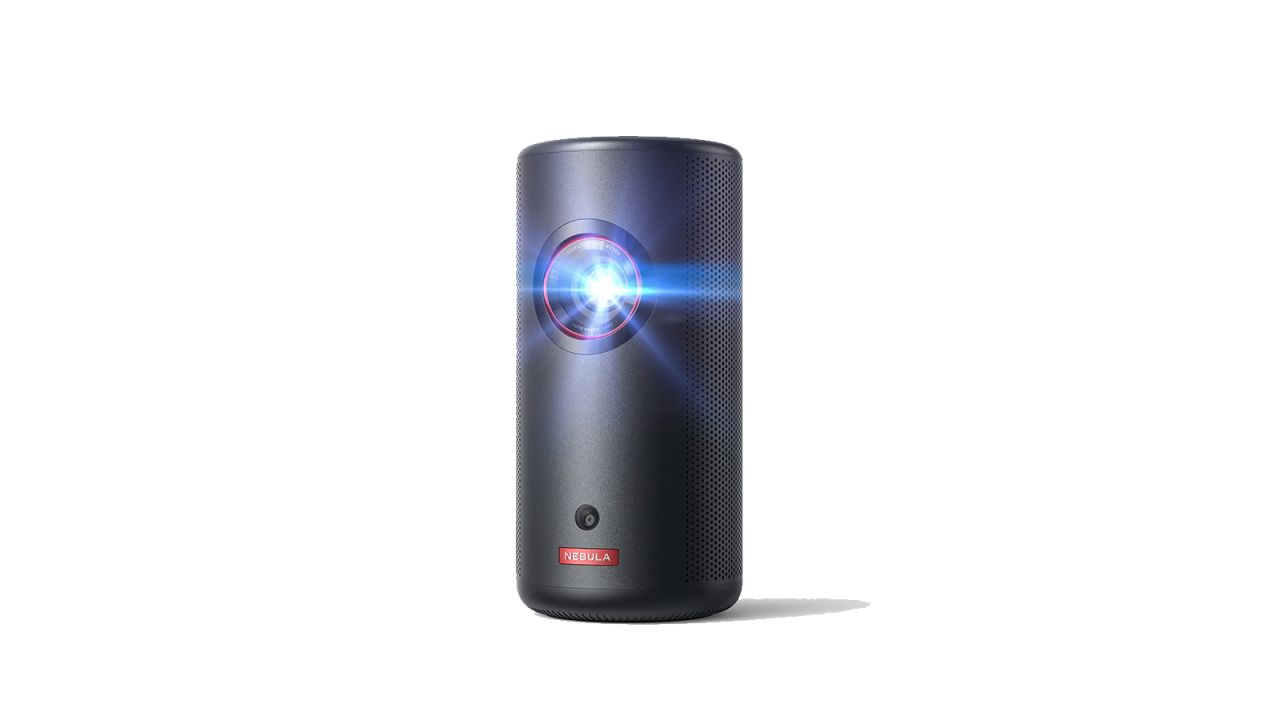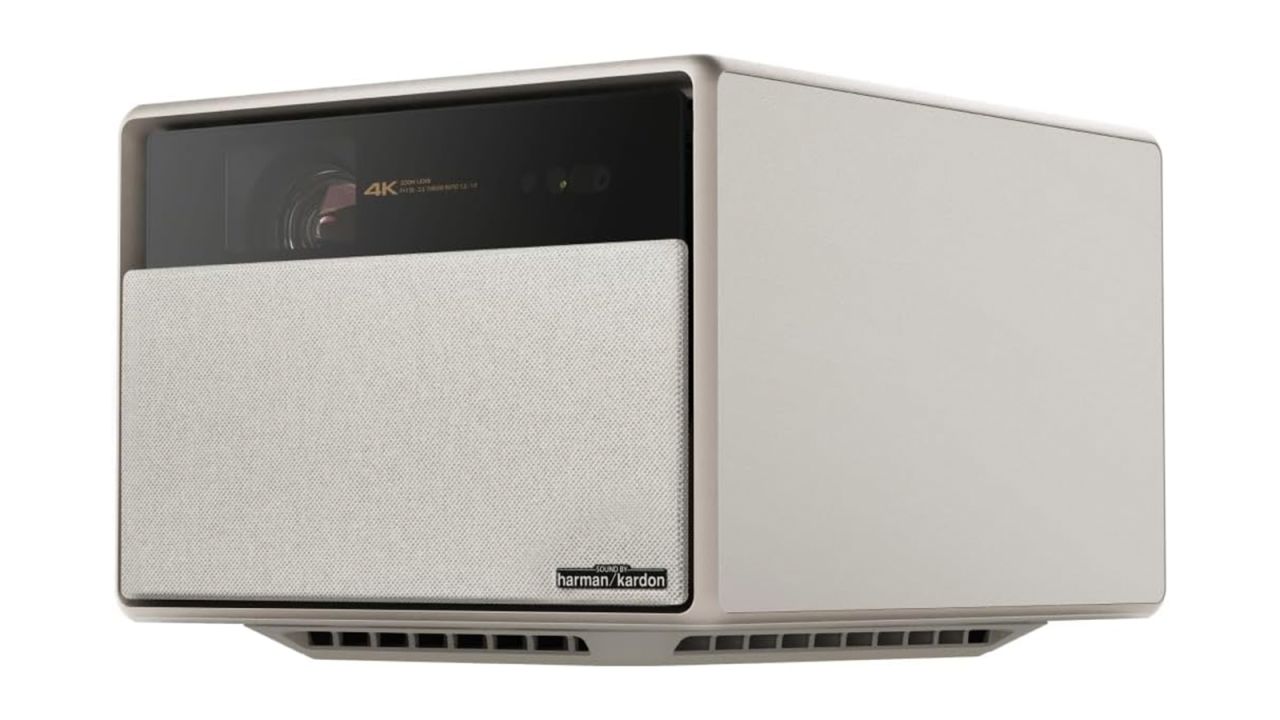The best projectors we tested
Best budget projector overall: Epson Home Cinema 1080
Best budget projector for cinephiles: BenQ HT2060
Best portable budget projector: XGIMI Halo+
Whether you’re escaping the summer heat or staying warm during the winter, you likely spend a good chunk of time huddled up in your living room, staying cozy and watching movies.
Sure, you can use a flat-screen TV, but what’s the fun in that? You could instead splurge a little and find an affordable home theater projector to bring that cinema experience to your living room. While you could spend thousands of dollars on a high-end projector, several options are available for less than $1,000. We tested nine of them so you can find the best projector for your needs.
Epson’s 1080p 3LCD home cinema projector combines a great price with an exceptionally bright and sharp picture that will shine in even bright rooms.
While the BenQ HT2060 is a little more expensive than the Epson projector, it makes up for it with impressive brightness and a filmmaker mode that will leave cinephiles on a budget raving.
The XGIMI Halo+ doesn’t have the best picture in this price range. Still, its built-in battery and easy portability make it perfect for impromptu movie nights wherever you find yourself.
Best budget projector overall: Epson Home Cinema 1080

The $750 Epson Home Cinema 1080 Projector has a mouthful of a name, but it delivers image quality in almost every lighted environment. The colors are bright and clear, even in a brightly lit room. In a dimmer space, you’re practically at the movies, with a big picture that can be projected up to 300 inches across. And while it retails for $750, we’ve seen certified refurbished units go for as low as $600 on Amazon.
Its bulb is rated at 3,400 lumens, making it the brightest of our picks. Like all the projectors in this review, it has a native 1080p resolution. Its 16,000:1 contrast ratio guarantees good blacks amid the bright colors. However, this is an entry-level projector, so there are some compromises in the feature set.
For one, there’s no onboard operating system like Android TV. That means you’ll need to hook up a streaming device like an Apple TV, Google Chromecast or Amazon Fire TV Stick, leading to an inevitable game of “juggle the remotes.” Luckily, with the Epson projector’s easy setup and automated keystone adjustments, you shouldn’t have to use the rather clunky Epson remote that often.
Another nit to pick is the sound quality. It’s not very good. The Epson only has two 2-watt monaural speakers, and it shows. But if you’re already hooking an external video source, you might as well hook up some external speakers, which you can do via a standard 3.5mm audio-out port.
It’s OK for games, but its 60Hz refresh rate means it’s really best for casual games rather than high-end competitive titles (like shooters) that benefit from a smoother 120 fps framerate.
Despite these limitations, which you’ll find on most entry-level projectors, the picture quality is hard to beat. It proved itself the most versatile projector among those we tested and, thus, gets the best overall crown.
Best budget projector for cinephiles: BenQ HT2060

The $949 BenQ HT2060 is a great — albeit slightly more expensive — alternative to the Epson projector. With a bulb rated at 2,300 lumens and a whopping 500,000:1 contrast ratio, it delivers a very good picture in most environments, although it does look a bit washed out in a fully lit room.
Still, this projector supports HDR10 and HLG video formats, enhancing the contrast. There’s also a filmmaker picture mode that turns off all the various processing of the picture, so you can watch a movie as the filmmaker intended. It looks great, too, and it’s the default setting we set the projector on. Its input lag is also better than that of Epson’s, so you can play the most fast-paced games on it. And the speakers, while not fantastic, are better than the Epson’s as well.
We found the remote a little bulky, and the on-screen menus felt slow. There’s only the onboard menu system instead of Android TV, so like with the Epson, you’ll need to find your own video source, whether streaming, a USB stick or a computer. However, the BenQ has a better sound-out option than the Epson with an S/PDIF port.
Overall, it was a very close toss-up between the two. Still, considering the BenQ’s higher cost, slightly inferior picture and similar needs for external video and audio, we had to grant the edge to Epson.
Best portable budget projector: XGIMI Halo+

If you’re looking for acceptable picture quality in a small package, it’s hard to beat the XGIMI Halo+. We loved XGIMI’s Horizon Pro 4K projector with its auto-keystone adjustment, auto-focus and ability to avoid obstacles when resizing the gorgeous picture, and the Halo+ packs much of that ease of use into a small, portable projector.
We’ll be honest, this is not a projector with fantastic picture quality. Its bulb is rated at only 900 lumens, meaning you must be in a pretty dark space to benefit from its picture. However, its fantastic Harmon/Kardon speakers and Android TV interface, which eliminates the need for an external video source as long as you’ve got Wi-Fi, go a long way in balancing that drawback. If you take the time to go through its image calibration options, you can improve the picture significantly. Still, don’t expect deep, dark blacks or great contrast. This isan entry-level device, and it shows.
How we tested
We spent days testing these projectors and tried them out in several different use cases. Ultimately, to make our decisions, we focused on brightness, contrast, color saturation, built-in sound and ease of use.
Brightness, contrast and color saturation
- Environment: We converted our basement into a home theater with a wall-hung screen. We used an Apple TV 4K as the external video source for all three projectors to ensure consistency. We tested during the day with both the lights on and off, which made the basement either bright or dimly lit via outside ambient light. We also tested at night, when the space became like a cave.
- Video content: We tested HDR10 content from Disney+ and older movies and shows filmed before Dolby Vision, HDR and other acronym-heavy video formats were available.
- Picture quality: We watched the same clip from a show or movie for each projector, switching the Apple TV connection between each projector to get as close a comparison as possible. While we didn’t precisely measure lumens to verify output, we could definitely eyeball each device to know which colors looked best, which were brightest and which delivered those deep blacks.
Sound
- Audio quality: We didn’t focus too much on audio quality, as we’ve never really encountered a projector that sounded as good as a dedicated 5.1 surround setup. (Or even as good as two HomePods connected in stereo to the Apple TV.) Still, we listened for clarity of dialog, how much impact the sound and music had and how crisp the soundtracks sounded.
- Connectivity: Connectivity was not a major factor in our reviews since only the Halo+ had the ability to function as a Bluetooth speaker outside of its projection capabilities. Its superior speakers did the job fine, but you won’t get a full cinema experience from any of these projectors out of the box.
Ease of use
- Remotes: For ease of use, we looked at which remotes felt best in our hands, which had backlit keys (important in dark rooms!) and which could be navigated by touch alone. Too many keys were a turn-off, leaving us to blindly feel around in the dark for what we hoped was the volume button.
- On-screen functionality: Here, we looked at menu and operating systems that were easy to navigate but also made for an attractive interface. Only the Halo+ had Android TV for its interface, while BenQ and Epson relied on somewhat clunky on-screen menu systems.
How our recommendations compare
| Resolution | 1920x1080 |
1920x1080 |
1920x1080 |
|---|---|---|---|
| Lens | Optical zoom/Manual focus |
1.3x manual zoom, manual focus |
Auto Focus, Digital Zoom |
| Brightness | 3,400 lumens |
2,300 lumens |
700-900 lumens |
| Contrast Ratio | 16,000:1 |
500,000:1 |
N/A* |
| Throw Ratio | 1.02–1.23 |
1.15–1.5 |
1.20:1 |
| Image Size | 30–300 in. |
30-300 in. |
40–200 in. |
| Projection Options | Front, rear, front ceiling, rear ceiling |
Front, rear, front ceiling, rear ceiling |
Front, rear, front ceiling, rear ceiling |
| Keystone Correction | 2D, ±30 degrees horizontal and vertical |
2D, (Auto) ± 40 degrees horizontal and vertical |
Auto Keystone Correction, Intelligent Obstacle Avoidance, Intelligent Screen Alignment |
| Operating System | N/A |
N/A |
Android TV |
| Connectivity | HDMI, USB, Wi-Fi |
HDMI, USB |
HDMI (eArc), USB, Wi-Fi, Bluetooth |
| Lamp Life | 12,000 hours |
20,000–30,000 hours |
25,000 hours |
| Supported Video Formats | HDTV |
HDR10, HLG |
HDR10, HLG |
| Display Method | 3LCD |
4LED/DLP |
DLP |
| Audio | 2x2W 3.5mm audio out |
2x5W, 5.1 audio out via S/PDIF |
2x5W Harmon/Kardon, DTS-Studio Sound, DTS-HD, Dolby Audio, Dolby Digital, Dolby Digital+ |
| 3D | No |
Yes |
Yes |
| Dimensions | 3.6 x 9.9 x 11.9 in., 6.17 lbs |
14.4 x 9.6 x 4.6 in., 7.9 lbs |
6.8 x 4.5 x 5.7 in., 3.5 lbs |
| Price | $738 | $999 | $738 |
*XGIMI declined to provide this information when asked.
How to choose the right projector for you
Here are some things to keep in mind when shopping for an under-$1,000 home projector.
- Brightness: Brightness is measured in lumens, and more is better (and brighter).
- Resolution: Like flat screens, projectors run the gamut. In general, the higher the resolution, the sharper the image. None of the projectors we reviewed cracked the 4K barrier; instead, they topped out at 1080p resolution.
- Contrast ratio: The contrast ratio is the difference between an image’s lightest and darkest parts, with a higher contrast ratio equalling a more vibrant image.
- Throw ratio: This number determines the size of the image based on how far away from the screen the projector is. For example, a throw ratio of 1.5:1 means that if the projector is 1.5 feet away from the screen or wall, the image will be 1 foot wide. Generally, a throw ratio from 1.2:1 to 1.8:1 is good for medium-sized spaces like an average-sized living room.
Other projectors we tested
Budget-friendly, ultra-portable projectors may not offer the stellar picture quality of their more-expensive brethren, but they make up for it with portability and simplicity. We picked the $559 Anker Nebula Solar Portable projector for its balance of price, picture and portability. It’s a great buy for anyone seeking a quality projector that’s portable and affordable.
Now more affordable than ever, the EpiqVision Mini EF-12 is a great mid-range projector that combines a bright picture with decent sound. While bright light tends to wash out the picture, its Yamaha speakers and easy portability can offset that negative.?
A little overpriced for what you get, the Nebula Capsule 3 is a tiny projector that delivers a so-so picture in exchange for portability. Still, thanks to its ability to charge via a USB connection, it’s a possible option for campers, road trips and other activities where you can’t be without your movies but would like to get out into the world.
This unique pivoting design offers a crisp and colorful picture up to 60 inches. We found the CineBeam PU700R to provide solid color representation with a decent balance of color and skin tones. The blacks tend to get a bit washed out, but the overall picture in a dim room looks great.
One of the Halo+’s bigger and more-expensive siblings, the Horizon Ultra 4K offers some of the best picture quality on the market. It offers a bright image, extra sharpness, excellent color accuracy and an innovative lens system that blends LEDs with lasers. Yes, it’s $1,700, but you get what you pay for.
The Freestyle Gen 2 is a jaunty little pivot projector offering a decent platform for streaming movies and playing games, but its image quality is so-so. Still, it has interesting accessories like an external battery and a mount for screwing into a light-bulb socket. It’s no home theater solution, but if you want something for the kids’ room, it might be what you’re looking for.




























